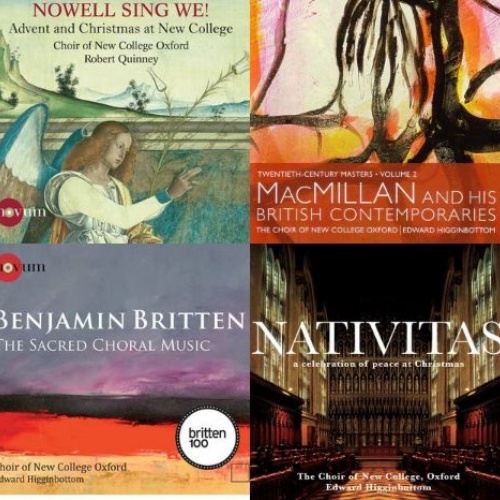The Blessed Virgin

This week’s play list has been selected by the Choir Administrator, while the Organist fulfils one of his many other roles – marking exams! You can find the playlist here.
I’ve chosen to celebrate the wealth of settings addressed to the Virgin Mary. At the heart of pre-Reformation devotion, Mary inspired texts of great beauty and imagination, which gave authors and composers an opportunity to move outside the prescribed texts of the daily office and explore the humanity and symbolism of the mother of God.
Many of these pieces I’ve chosen evoke cherished memories from my own and my family’s experience as choral singers in many Evensongs and concerts, but also from my time as a chorister parent here in chapel and later as choir administrator listening in at recording sessions.
Medieval Marian texts were inspirational to Benjamin Britten: he famously mined them for his Ceremony of Carols (1942); but the setting I’ve chosen to begin this sequence is the Hymn to the Virgin, written in 1930 when he was just sixteen. It has the freshness of youth and young singers bring that quality to it. It has always been a piece which works wonderfully in grand spaces and is often chosen for college carol services with the semi-chorus audible from the antechapel.
The sequence largely follows the key moments in Mary’s journey from Annunciation, through the birth of Christ (marked here in settings by Poulenc and Warlock), to her place in the heavenly hierarchy. At its heart is the Ave Maria, in two romantic and spacious settings by Bruckner and Rachmaninov: for those of us who love singing early music it’s occasionally wonderfully liberating to let rip in the full blown climaxes of a Bruckner motet! These two settings contrast well with the delicate architecture of Orlando Gibbons’ setting of the Magnificat – the closest we get to Mary’s own personality speaking, heard at every Evensong in New College Chapel. Guerrero’s Ave Virga Sanctissima was celebrated in his lifetime for its beauty and much imitated by other composers. Such was his devotion that he was known as ‘El cantor de Maria’, and this motet illustrates the pictorial imagery akin to secular love poetry so often evoked in Marian texts and the emotional, even passionate quality of the music:
Hail, most holy virgin, most holy mother of God, most bright star of the sea. Hail, ever-glorious one, as precious as a pearl, as beautiful as a lily, shining and scented as a rose.
James MacMillan is justly honoured amongst 21st–century composers for his particular sound world and his contribution to devotional choral music – notably his Miserere commissioned by The Sixteen and quite overwhelming when heard for the first time! On the Annunciation of the Blessed Virgin Mary comes from the choir’s disc, Macmillan and his British Contemporaries, which is testament to the choir’s commitment to contemporary liturgical music, and evokes all of Macmillan’s qualities as a meditative spiritual interpreter.
No musical homage to the Blessed Virgin Mary would be complete without something from Monteverdi’s Vespers of 1610 which I first heard as a teenager in Wells Cathedral: I stood transfixed throughout the performance utterly overwhelmed by this new and exotic sound world unlike anything I’d yet encountered. I’ve sung in some memorable performances over the years and it never fails to bring back the excitement of that first hearing. While the Vespers are beyond the scope of New College Chapel’s ordinary liturgy (and it’s not clear whether they were ever conceived to be sung as such) the choir often sings one of the psalm settings as an anthem. But I’ve chosen here the Ave Maris Stella - partly for the beauty of its text and melody – but also for the exuberance of Monteverdi’s instrumental ritornelli which punctuate the solo verses.
The sequence ends with Palestrina’s Alma Redemptoris Mater - one the antiphons sung at the end of the service of Compline: the last act of devotion in the liturgical day and one dear to choral singers (and to me for the memories it evokes of Christmas plays I took part in as a child, which were accompanied by polyphony I rediscovered later as a choral singer). We return to a four-part setting, but one which in its still simplicity echoes ‘nature marvelling’ in the text.
